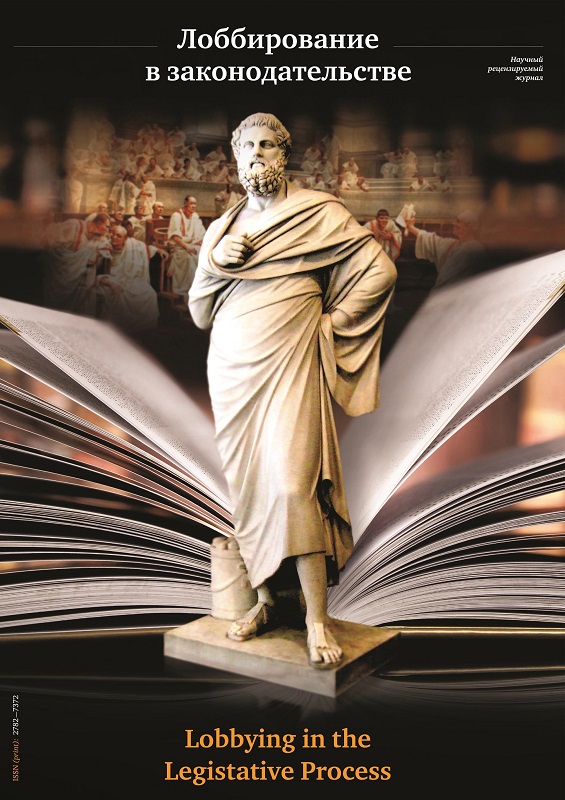Перспективы, опасности и риски использования искусственного интеллекта при осуществлении судопроизводства
- Авторы: Волосова Н.Ю.1
-
Учреждения:
- Оренбургский государственный университет
- Выпуск: Том 2, № 1 (2023)
- Страницы: 44-49
- Раздел: Уголовно-правовые науки
- URL: https://journals.eco-vector.com/2782-7372/article/view/545948
- DOI: https://doi.org/10.33693/2782-7372-2023-2-1-44-49
- ID: 545948
Цитировать
Полный текст
Аннотация
Статья посвящена перспективам использования искусственного интеллекта при осуществлении судопроизводства. Автором в работе вскрываются причины обращения к изучению вопроса использования искусственного интеллекта в судопроизводстве, среди которых главное место занимает количественный прессинг дел, находящихся в производстве судей; обосновывается необходимость изучения не только таких перспектив, но опасностей и рисков, которые могут возникнуть при использовании искусственного интеллекта в судопроизводстве. Автором делается вывод о необходимости формирования принципов-приоритетов при использовании искусственного интеллекта в судопроизводстве, среди которых им выделены приоритет человеческих ценностей; приоритет пересмотра судебных решений, принятых искусственным интеллектом, человеком; приоритет мнения участников судопроизводства относительно используемой формы судопроизводства.
Ключевые слова
Полный текст
Об авторах
Нонна Юрьевна Волосова
Оренбургский государственный университет
Автор, ответственный за переписку.
Email: vasilii_vasiliev@rambler.ru
ORCID iD: 0000-0003-3254-948X
Scopus Author ID: 56705602800
доктор юридических наук, доцент; заведующая кафедрой уголовного права Оренбургского государственного университета. Оренбург, Российская Федерация.
Россия, г. ОренбургСписок литературы
- Аликперов Х.Д. Электронная система определения оптимальной меры наказания (постановка проблемы) // Криминология: вчера, сегодня, завтра. 2018. № 4 (51). С. 13–22.
- Апостолова Н.Н. Искусственный интеллект в судопроизводстве // Северо-Кавказский юридический вестник. 2019. № 3. URL: https://cyberleninka.ru/article/n/iskusstvennyy-intellekt-v-sudoproizvodstve (дата обращения: 06.02.2023).
- Гасанов Ш.Ш., Сулейманов Д.И. Искусственный интеллект в судопроизводстве: проблемы и тенденции // Юридические науки и образование. 2022. № 66. С. 35–50.
- Гиллес П. The electronic process and the princip leoforality // Электронное приложение к Российскому юридическому журналу. 2011. № 3. URL: https://cyberleninka.ru/article/n/the-electronic-process-and-the-principle-of-orality (дата обращения: 06.02.2023).
- Ермолаев Д.А. Анализ применения и развития различных типов искусственного интеллекта для российской экономики // Научные труды Вольного экономического общества России. 2021. № 3. URL: https://cyberleninka.ru/article/n/analiz-primeneniya-i-razvitiya-razlichnyh-tipov-iskusstvennogo-intellekta-dlya-rossiyskoy-ekonomiki (дата обращения: 19.02.2023).
- Европейская этическая хартия об использовании искусственного интеллекта в судебных системах и окружающих их реалиях Принята на 31-м пленарном заседании ЕКЭП (Страсбург, 3–4 декабря 2018 г.). URL: https://rm.coe.int/ru-ethical-charter-en-version-17-12-2018-mdl-06092019-2-/16809860f4 (дата обращения: 19.09.2021).
- Искусственный интеллект. URL: https://artintelligence12.jimdofree.com/
- Коберидзе А.З. Использование искусственного интеллекта для оптимизации бизнес-процессов // Наука и бизнес: пути развития. 2020. № 12. С. 185–188.
- Китай может стать первым в мире, кто внедрит искусственный интеллект в правовую систему. URL: https://www.inkstonenews.com/tech/china-may-become-worlds-first-bring-ai-legalsystem/article/3125009 (дата обращения: 24.02.2022).
- Лаптев В. Искусственный интеллект в суде: как он будет работать. URL: https://pravo.ru/opinion/232129/
- Рост нагрузки и расширение «цифры»: итоги работы судов за 2022 год. URL: https://www.vsrf.ru/press_center/mass_media/32147/
- Семина Т.В., Го Вэй. Воздействие технологий искусственного интеллекта на социальные отношения // Социология. 2022. № 3. URL: https://cyberleninka.ru/article/n/vozdeystvie-tehnologiy-iskusstvennogo-intellekta-na-sotsialnye-otnosheniya (дата обращения: 19.02.2023).
- С начала года суды в России провели 142,5 тыс. заседаний через интернет. URL: https://www.vsrf.ru/press_center/mass_media/31147/
- Херн А. Поддельные отпечатки пальцев могут имитировать реальные в биометрических системах URL: https://www.theguardian.com/technology/2018/nov/15/fakefingerprints-can-imitate-real-fingerprints-in-biometric-systems (дата обращения: 05.02.2023).
- Что такое ИИ? Подробнее об искусственном интеллекте. URL: https://www.oracle.com/cis/artificial-intelligence/what-is-ai/
- Asimov I. Runaround. In: I, Robot. Collection works. New York City: Doubleday, 1950. P. 40.
- Crushing immigration judge caseloads and lengthening hearing wait times. URL: https://trac.syr.edu/immigration/reports/579/
- Heer M. Der Richter und sein Bild. Wie sehen wir uns – wie werden wir gesehen? Bern: Stämpfli-Verlag, 2008. S. 25–46.
Дополнительные файлы









